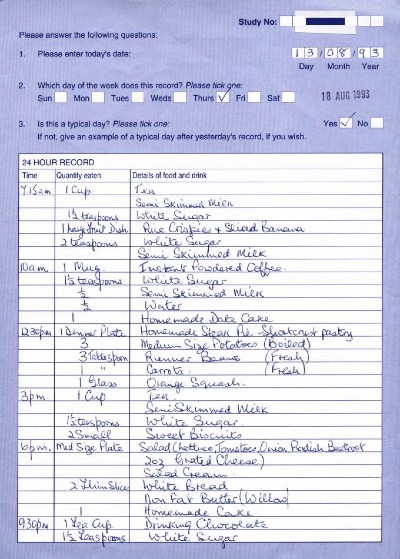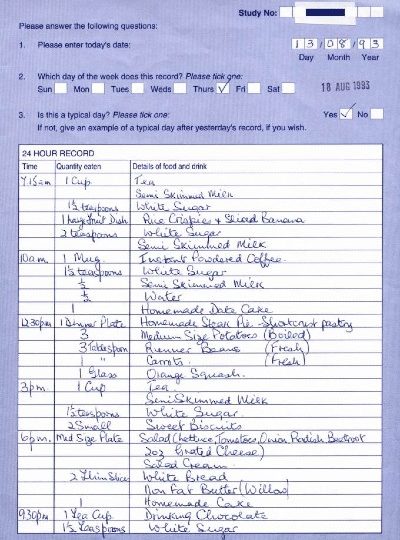In my introduction to ALKAscore I explained its origins in the LAKE food screener scoring system. So you see that LAKE is one of several laboratory schemes for estimating acid load on the kidneys. But how does it actually work?
The first thing to remember is that LAKE is built on PRAL. So if you need to refresh your understanding of Potential Renal Acid Load do it now. Because you must understand the principles of estimating acid load on your kidneys. Otherwise, you’ll never understand LAKE or ALKAscore.
LAKE Food Screener Scoring Principles
In the introduction, we saw that LAKE is one of several tools that scientists use to assess aspects of nutrition. In this case, we’re looking at how food intake might affect the acid load on their kidneys. Because LAKE developed from studies of acid load in kidney stone sufferers.
Later, I’ll explain my ideas for adapting the LAKE scoring system into a tool for diet planning. But first I’ll explain the principles of LAKE for assessing historic food consumption.
LAKE Score Calculation
I’ll explain the LAKE Score Calculation using data from the study[1]:
| Foods | Citation % | PRAL/ 100 g | Food group PRAL/ 100 g | Standard serving adjustment | LAKE score |
|---|---|---|---|---|---|
| Grains | |||||
| Pastas: Spaghetti, macaroni, etc | 37% | - 0.16 | + 1.75 | x 0.8 (80 g) | + 2 (+ 1.4) 344 kcal |
| Pizzas: Pizza, calzone, focaccia, piadina, etc | 23% | + 4.3 | |||
| Rice: Risotto, boiled rice, rice salad | 18% | + 0.7 | |||
| Baked pasta: Lasagna, cannelloni, pasta al forno, etc | 10% | + 3.3 | |||
| Stuffed pasta (meat or vegetarian): Ravioli, tortellini, agnolotti, etc | 7% | + 4.1 | |||
| Dumplings: Gnocchi | 5% | + 2.0 | |||
| Meats | |||||
| Steak (beef and veal): Bistecca | 24% | +9.8 | + 9.7 | x 1.0 (100 g) | + 10 (+ 9.7) 166 kcal |
| Roast beef: Arrosto | 21% | +6.1 | |||
| Roast chicken or turkey: Pollo o tacchino arrosto | 21% | +9.7 | |||
| Fish (tuna, sea bass, etc): Tonno, orata, etc | 15% | +13.0 | |||
| Breaded and fried veal chop: Cotoletta | 11% | +11.0 | |||
| Pork chop: Cotoletta, costine, etc | 8% | +11.0 | |||
| Cured meats | |||||
| Ham: Prosciutto, coppa, mortadella, etc | 50% | + 15.3 | + 12.5 | x 0.5 (50 g) | + 6 (+ 6.2) 112 kcal |
| Salami: Salame | 25% | + 10.7 | |||
| Dried salted beef: Bresaola | 13% | + 9.0 | |||
| Pork sausage: Salsiccia | 8% | + 9.01 | |||
| Bacon: Pancetta | 4% | + 7.23 | |||
| Eggs | |||||
| Baked eggs | 33% | + 10.0 | + 7.92 | x 0.5 (50 g) | + 4 (+ 3.9) 92 kcal |
| Omelette: Frittata | 66% | + 7.0 | |||
| Cheeses | |||||
| Parmesan: Parmigiano | 27% | + 23.4 | + 17.1 | x 0.5 (50 gr) | + 10 (+ 8.5) 161 kcal |
| Mozzarella | 27% | + 16.7 | |||
| Crescenza | 23% | + 8.5 | |||
| Emmenthal | 11% | + 21.6 | |||
| Scamorza | 6% | + 13.4 | |||
| Fontina | 6% | + 19.3 | |||
| Legumes | |||||
| Peas | 50% | 0.0 | - 2.0 | x 1.0 (100 g) | - 2 (- 2.0) 137 kcal |
| Beans | 50% | - 4.0 | |||
| Potatoes | |||||
| Baked potatoes | 20% | - 9.0 | - 11.6 | x 1.0 (100 g) | - 10 (-11.6) 101 kcal |
| Potato salad | 40% | - 9.0 | |||
| Fried potatoes | 40% | -15.6 | |||
| Vegetables | |||||
| Green salad | 33% | - 3.0 | - 4.95 | x 2.0 (200 g) | - 10 (- 9.9) 190 kcal |
| Vegetable soup: Minestrone | 19% | - 7.9 | |||
| Boiled vegetables | 17% | - 9.0 | |||
| Mixed salad | 13% | - 7.1 | |||
| Tomato salad | 10% | - 4.0 | |||
| French bean | 8% | - 4.0 | |||
| Fruits | |||||
| Apple/Pear | 20% | - 2.2 | - 4.25 | x 2.0 (200 g) | - 10 (- 8.5) 86 kcal |
| Orange | 20% | - 3.8 | |||
| Mandarin | 18% | - 3.8 | |||
| Peach | 16% | - 4.5 | |||
| Banana | 14% | - 6.5 | |||
| Apricot | 12% | - 6.2 | |||
| Milk and dairies | |||||
| Milk | 60% | + 0.14 | + 0.94 | x 1.25 (125 g) | + 1 (+1.2) 117 kcal |
| Yogurt | 20% | + 0.34 | |||
| Ice cream | 20% | + 3.95 | |||
| Bread | |||||
| Bread | 100% | + 2.31 | + 2.31 | x 0.5 (50 g) | + 1 (+1.5) |
LAKE Food Scoring Time Period
Scores are calculated each day. By collecting the number of servings of each food group. Then calculating separate totals for all positive (acid-forming) and all negative (alkalizing) food groups. Note, this study is concerned with explaining the value and reliability of LAKE scoring. So if you want actual numbers for a typical day, ask me to review the related studies.
LAKE Score Food Groups
The simplicity of LAKE food scoring is achieved by using averages of food groups. So this saves having to lookup each individual food item as we have to with PRAL food scoring.
In my discussions with other people, the food group scores have been the most controversial aspect. But for now all I ask is that you study the numbers in the table above. Then contact me if you have problems understanding how the LAKE calculations work. Because we will discuss alternative ways to apply different scores later. But you can’t adapt those scores for food groups if you don’t understand them.
LAKE Score Food Measures
The LAKE score is measured by totaling individual scores for all servings of each food group. Now the serving sizes used in this study are clearly marked in the table. But people have raised problems with measuring serving sizes in the real world.
Again I say focus on the methods and principles from this study for now. Because this is another area we can adapt for ALKAscore.
LAKE Food Score Targets
As I mentioned, this study explains the LAKE score methods. So there is little information about interpreting results. But there is one significant point from this study…
In particular the number of foods with positive score should be kept lower than 10 in any case.

This form is not part of the LAKE study. So scoring could be challenging.
Your LAKE Food Score Principles
To make sure you understand LAKE Food Scoring you should practice assessing your food intake for a few days. Remember to focus on accurate record keeping at this stage. So there is no pressure to “beat” any particular score. Because you need to be certain you can master the basic principles. If not, use the feedback form below for assistance.
In fact, send me your feedback anyway. Because I need to know how ALKAscore affects you. Then I can make it work better.
LAKE Food Score Principles References
- Trinchieri, A. “Development of a rapid food screener to assess the potential renal acid load of diet in renal stone formers (LAKE score).” Archivio italiano di urologia, andrologia: organo ufficiale [di] Societa italiana di ecografia urologica e nefrologica 84, no. 1 (2012): 36.
